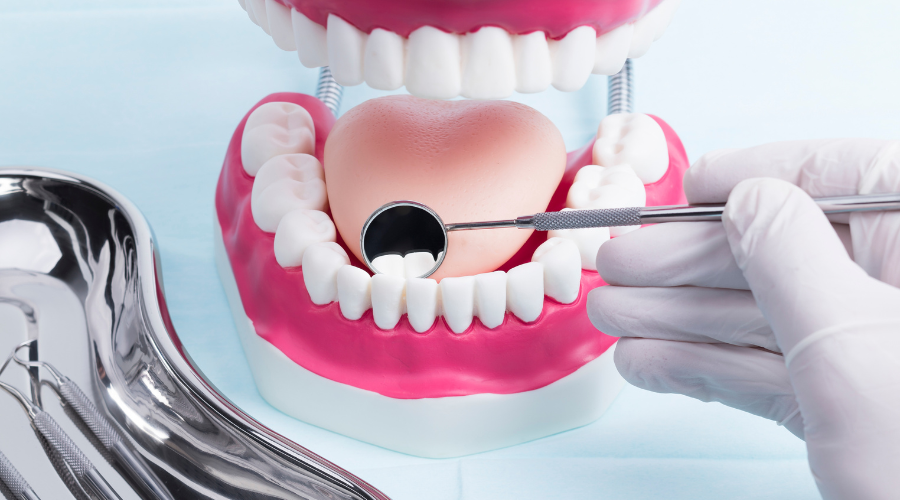What is Aesthetic Dentistry?
What is Aesthetic Dentistry?
Aesthetics or cosmetic dentistry, as it is more commonly used among the public, is the first option that comes to mind for people who are uncomfortable with their smile. In fact, filling, root canal treatment and orthodontic treatments which are performed in routine dentistry applications also address the aesthetic needs of the person in a way. In aesthetic dentistry, the first aim is to adjust the visual while performing the function. Although this is not a separate area of expertise in dentistry, it is carried out by physicians who have developed themselves in their field. In fact, there is no such thing as an ‘Ideal Smile’, some of us have naturally large teeth, some of us have naturally yellowish teeth, and the differences from person to person are normal as long as you are happy. However, pearly white teeth, which are sometimes seen on social media, cause the person to be uncomfortable with their own smile and teeth, and may cause requests such as Hollywood smile and smile design.
Human is a social being and one of the things that plays the most important role in communication in daily life and symbolizes self-confidence is our smile. Caries, broken teeth, abrasions, discoloration, which affect self-confidence and which must be treated, both to regain healthy state and indirectly an aesthetic appearance is also obtained. Although aesthetic dentistry can be seen as changes in the teeth from the outside, it actually aims to beautify the existing disorders in the teeth, treatment of the gums, and the closing disorders in the jaws. After all these procedures are performed, a healthy mouth, a happy smile and improvement of social relations occur.
What are the application areas of aesthetic dentistry?
Applications such as Orthodontic Treatment, Teeth Whitening, Composite Filling (White Filling), Porcelain Lamina, Zirconium, Implant, Botox are the application areas of aesthetic dentistry. This field of study provides not only the appearance and visuality of the teeth, but also the treatment of diseases of the gums, gingival recession, closing disorders in the jaws. Therefore, cooperation with Gum Diseases specialist, Oral and Maxillofacial surgeons is required for a detailed treatment plan.
- Pink aesthetics (Gum aesthetics): In cases called Gummy smile, where the gums are seen too much while smiling, dentists can perform gingivectomy operation after performing the necessary clinical and radiological examinations, if deemed appropriate. In patients in which this operation is not suitable, botox application is applied to reduce the appearance of the gums. Thus, a more aesthetic smile is obtained as the teeth will appear more while smiling.
- Teeth Whitening: When thinking about aesthetic dentistry, the first thing that comes to mind is tooth whitening procedure. This process, which has two types which are home type and office type, can be applied in certain sessions. Although there is a widespread belief among the public that teeth whitening and calculus removal cause teeth to become more yellow and sensitive, this is not the case thanks to the developing technology and opportunities.
- Porcelain Lamina: Porcelain laminates, designed as millimetres and adhered only to the front surface of the teeth, both provide a natural appearance by transmitting the light and provide the patient and the physician with the convenience of achieving results in a short time. Its biggest advantage is that it can achieve the desired result without causing a major loss of sound structure in the tooth. There are small but important details that need to be considered while designing. More rounded-cornered teeth are designed for women and pointed-cornered teeth for men. While light coloured and longer teeth are suitable in young patients, longer teeth are designed and a dynamic image is created by taking advantage of this in middle-aged patients.
- Implant Applications: Based on the fact that teeth affect a significant part of facial aesthetics, it can cause both social and psychological problems, as well as nutritional and speech disorders. Today, with the implant, which offers a solution to the problem without traumatizing the neighbouring teeth in the absence of a single tooth, this deficiency can be easily eliminated and therefore aesthetics can be achieved. The patient’s age, bone support, socio-economic status, oral hygiene, alcohol and tobacco use are among the criteria that should be questioned before deciding to make an implant.
- Zirconium: The advantage that distinguishes this technique from other crown applications is that it provides a natural appearance by providing light transmission. In this application, there is no negativity such as falling out of the tooth. Since the materials used are compatible with the texture, it allows for many years of use. As a result, patients who cannot smile for a long time, who are shy, who put their hands to their mouths while smiling, leave the clinic with big smiles at the end of the treatment, giving the patient and the physician a feeling that all their efforts are rewarded.



